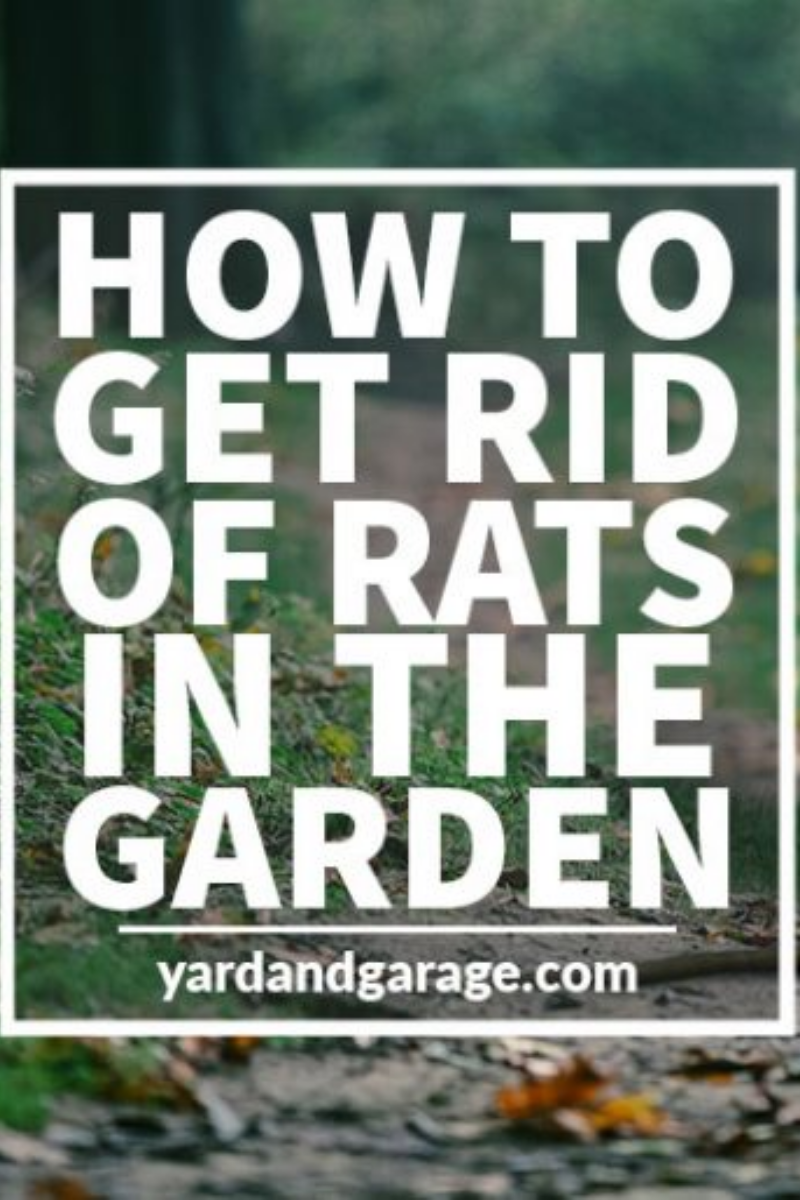
Rats! They are some of the most disgusting pests you will encounter in your garden. Not only do they have the potential to carry serious diseases, but rats can also do a lot of damage.
These rodents can chew through your vegetables and flower bulbs basically just laying waste to all of your gardening efforts.
Rat poison is generally the first step that homeowners want to take but that may not be your best option. The danger that poisons pose to children, pets or your food sources far outweigh the benefits of eliminating those rats.
Here we will discuss alternatives to poison which include both lethal and non-lethal methods.
Non-Lethal Methods to Get Rid of Rats
Live Traps
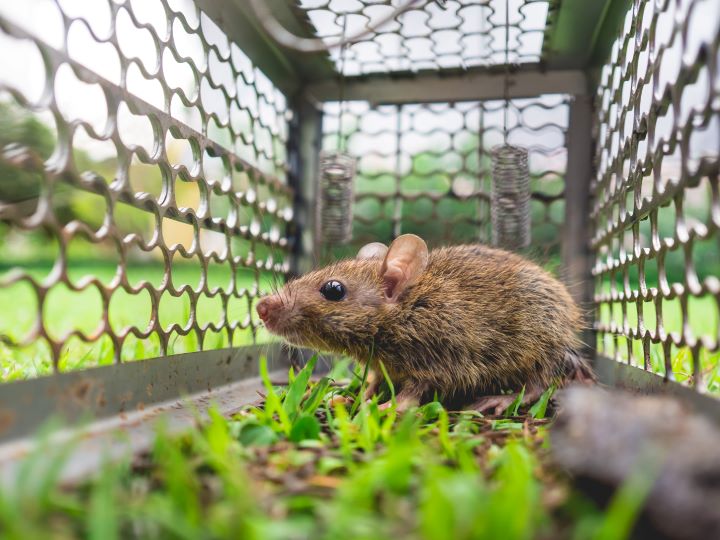
There are several varieties of traps that will capture and contain the rat so that you can release them somewhere far from your home. The CaptSure Humane Rodent Trap is reusable and safe for kids and pets. Some of these traps are large enough that they will hold several of the little buggers or you can get a trap that is really only single occupancy.
You will need to check the traps routinely so that the rats can be released (far away from your property!) and not die from dehydration or hunger.

DIY Bucket Rat Trap
You can also cobble together a DIY rat trap for almost nothing.
Materials needed:
- 5-gallon bucket
- 12″ – 16″ piece of wood
- Peanut butter
How to construct:
- Place the peanut butter at the bottom of the 5-gallon bucket.
- Now lean the wood or stiff cardboard against the bucket so that the rat can climb to the rim.
- It will jump into the bucket to get the peanut butter but won’t be able to get back out.
- Check back regularly to see if your trap worked.
Ratproofing
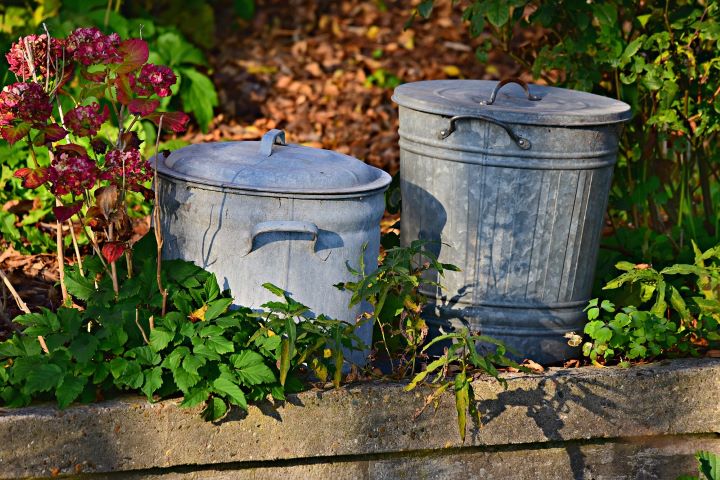 Keeping the rats at bay is the best thing you can do though. With a little forethought, you can create an environment that makes it difficult and unattractive to these rodents.
Keeping the rats at bay is the best thing you can do though. With a little forethought, you can create an environment that makes it difficult and unattractive to these rodents.
Eliminate sources of food and water
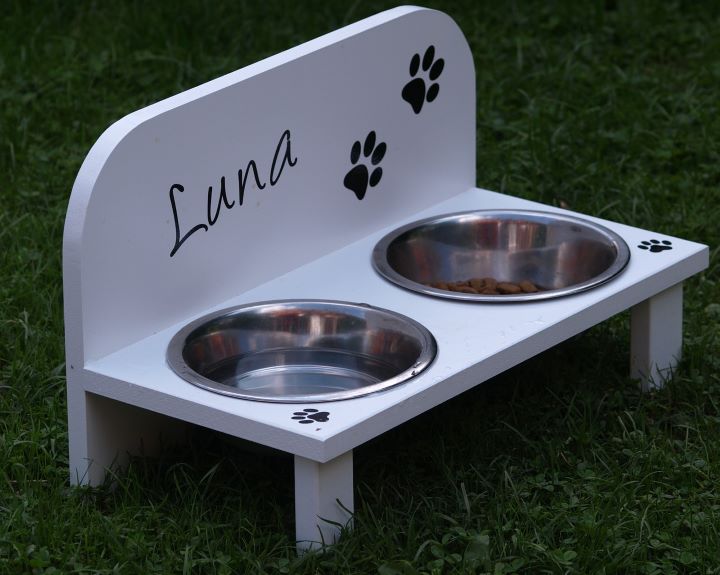 Trash cans with loose lids, dog food bowls, and even bird feeders will attract rats even if they are off the ground. Make sure that your trash cans are secure and that the outsides are free of food debris. Trash bags can leak so don’t be afraid to double bag if necessary.
Trash cans with loose lids, dog food bowls, and even bird feeders will attract rats even if they are off the ground. Make sure that your trash cans are secure and that the outsides are free of food debris. Trash bags can leak so don’t be afraid to double bag if necessary.
After feeding your dogs or cats you should probably move the empty bowls inside. Don’t leave bags of pet food in the garage or on the porch either.
Placing them in those rolling plastic containers is not a fail-safe. I’ve opened up one before to see a mouse pigging out on puppy chow.
Metal trash cans with secure lids are a good option and there are roller bases to make them easy to move.
Keep Yard Clean
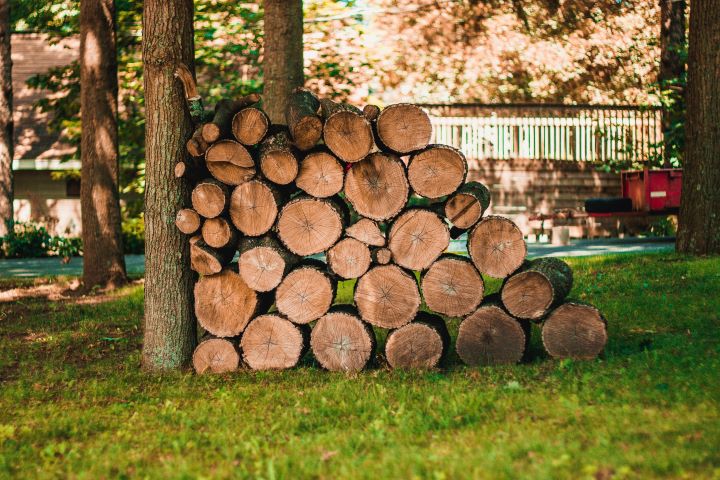 Rats love to build their nests in cozy areas where they can hide. For this reason, you need to eliminate and remove any wood piles around the garden and house. If you have firewood, keep it well-stacked and at least a foot off the ground.
Rats love to build their nests in cozy areas where they can hide. For this reason, you need to eliminate and remove any wood piles around the garden and house. If you have firewood, keep it well-stacked and at least a foot off the ground.
Deterrents
Strong smells are apparently irritating to mice although the little buggers thrive in sewers, don’t they? If you want to try and keep rats away using some natural remedies these are the most popular.
Peppermint oil
 Soak cotton balls in peppermint oil and place them in likely points of entry. This would be cracks or spaces near doors and entryways, along the walls in the garage, etc. Even if the peppermint oil doesn’t work, you’ll have a great smelling house!
Soak cotton balls in peppermint oil and place them in likely points of entry. This would be cracks or spaces near doors and entryways, along the walls in the garage, etc. Even if the peppermint oil doesn’t work, you’ll have a great smelling house!
Pepper
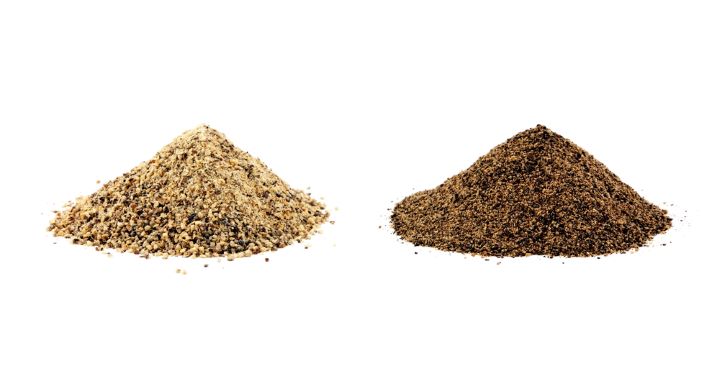 One option is to sprinkle some black pepper by itself around the points of entry we talked about above. You could also create a spray of cayenne pepper and oil to use outside along walls and crevices.
One option is to sprinkle some black pepper by itself around the points of entry we talked about above. You could also create a spray of cayenne pepper and oil to use outside along walls and crevices.
Mothballs
 This is a favorite of my dad who has mothballs all around his garage and even in his antique car.
This is a favorite of my dad who has mothballs all around his garage and even in his antique car.
He swears by it keep rats and mice at bay. It is thought that the naphthalene in the mothballs serves as a deterrent.
Catnip
 I personally have never used catnip but I can’t see where it would do any harm. I’ve read that folks have actually planted catnip as a border around their garden. And who knows, maybe the catnip will bring all the neighborhood cats to your yard and take care of the rats personally!
I personally have never used catnip but I can’t see where it would do any harm. I’ve read that folks have actually planted catnip as a border around their garden. And who knows, maybe the catnip will bring all the neighborhood cats to your yard and take care of the rats personally!
Lethal Methods of Rat Control
Traps that Kill
The most common trap (and least expensive) is the basic wooden snap trap that has been in use for decades. The main problem with this type of trap is that I’m convinced I’m going to lose my hand. You have to pull the snap back with your fingers and then secure it.
If you manage to make it through this unscathed you still have to place the mousetrap. The base is so narrow that I generally set it off and there’s nowhere for my fingers to go!
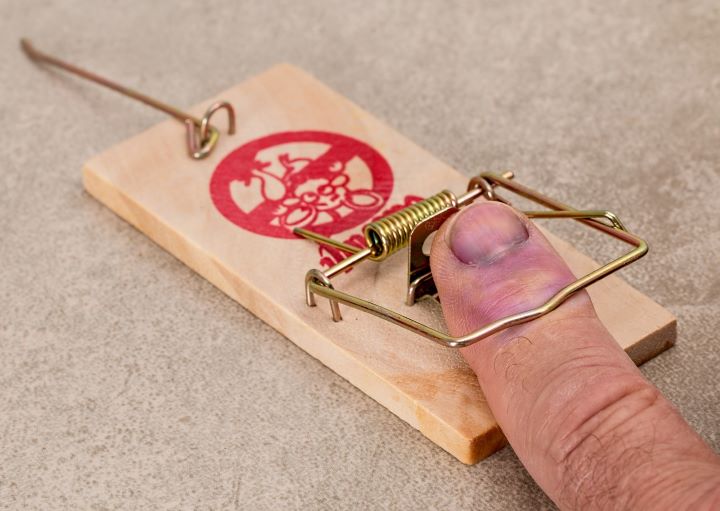
I recommend a more modern version of the classic mousetrap. I’ve used these in my garage and every time the rat has died instantly and I’ve never had the mouse be successful in taking the bait and escaping.
These have great springs that lock and provide a quick and painless death. If you’re okay with lethal traps then I highly recommend them.
Trap Placement
Traps need to be set along walls and baseboards because this is where mice run. There are special baits that you can buy which are supposed to be irresistible to rats but I’ve found that peanut butter is a great option. It can’t be easily carried off which increases the likelihood of trapping the rat.
Sticky Traps
Another option that people have used is a sticky glue trap. These are the little pads that the rat runs over and its feet become stuck to the surface. I dislike these based on my personal experience. I had put one out and forgot about it for about a week or so.
I came back to a dead, desiccated mouse that had actually pulled his leg apart trying to escape. I may hate mice and rats but I would not wish this kind of long, painful death on anything.
Conclusion
Gardens are a favorite destination for rats. If you want to keep yours rodent free you will need to have a plan that includes both proactively maintaining your yard and elimination of the pests through either lethal or non-lethal means.
It will take some significant action but it will be worth it to avoid the potential diseases that rats carry and reap the benefits that your garden has to offer.
